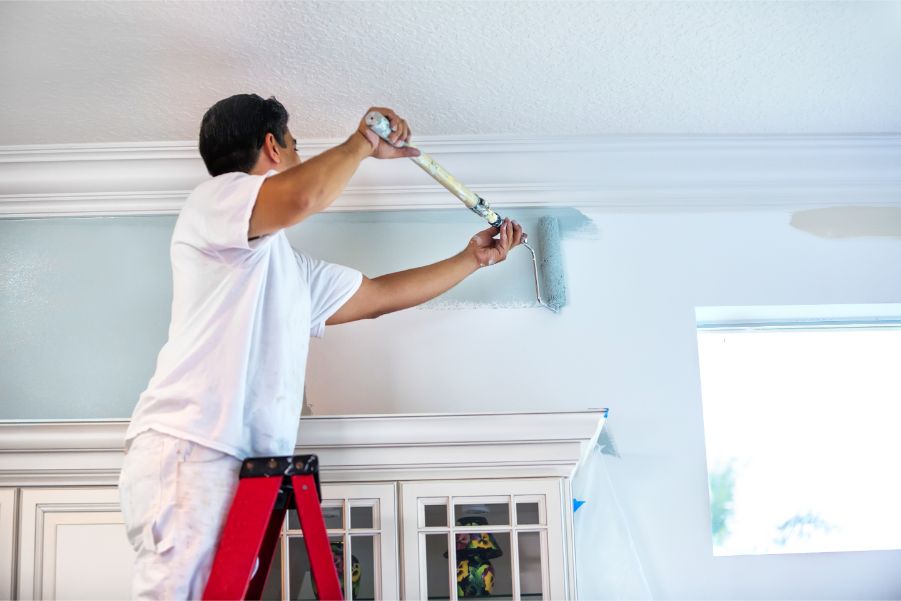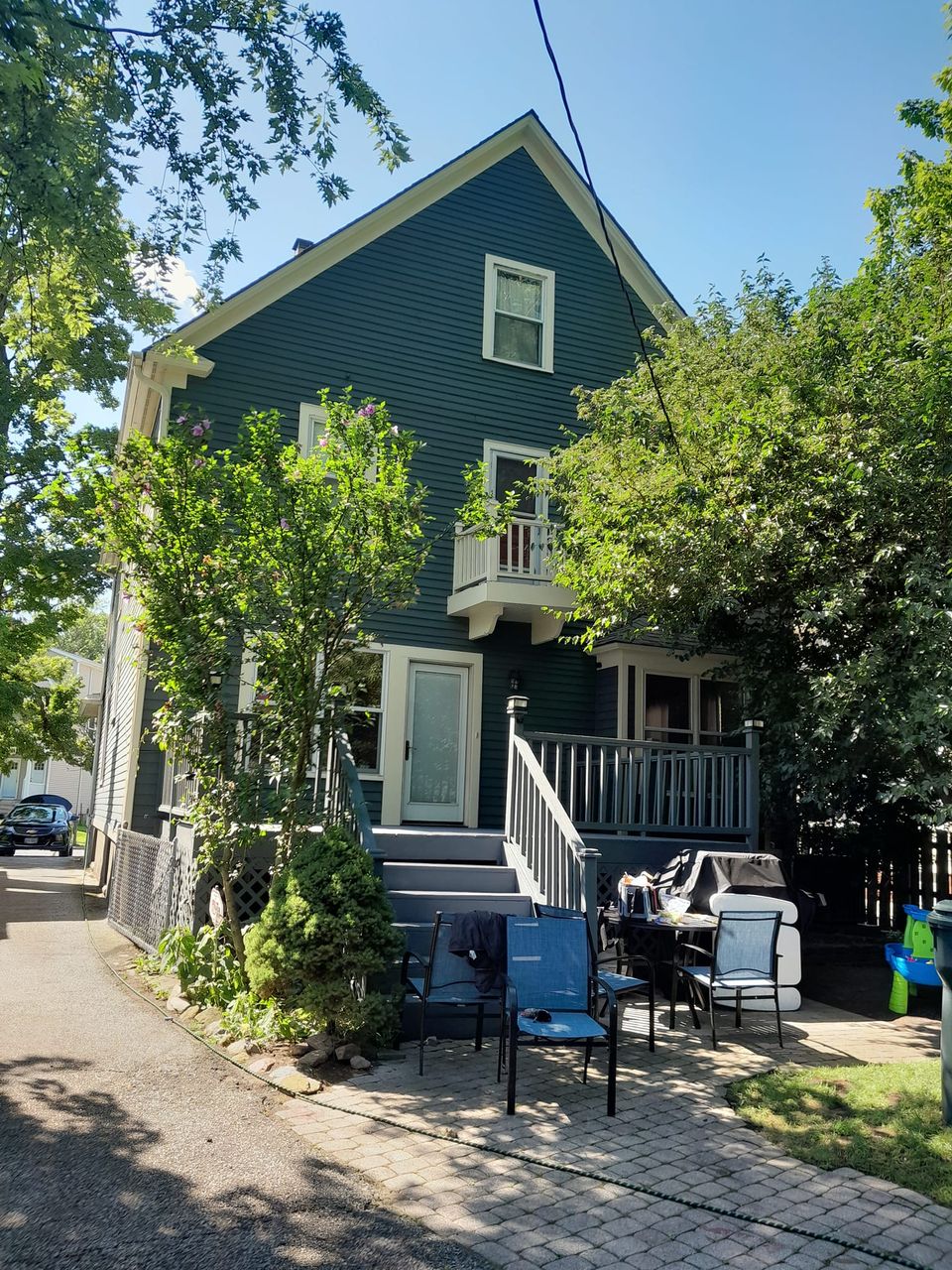Revitalize Your Space With Inside and Exterior Home Paint
Rejuvenating your room via both interior and external home paint is a tactical strategy to enhancing your home's overall setting and market worth. Recognizing the long-term advantages of quality paints goes past appearances; it entails considerations of toughness and upkeep.
Benefits of Residence Paint
Transforming a home's appearance via painting not just improves its visual allure yet likewise provides significant practical benefits. A fresh coat of paint offers as a protective barrier versus environmental components, such as dampness and UV rays, which can lead to degeneration in time. This safety layer is specifically important for exterior surface areas that deal with the brunt of the weather condition.
Furthermore, indoor painting can boost air high quality by utilizing low-VOC or zero-VOC paints, which lower unsafe discharges and promote a much healthier living environment. This is particularly advantageous for family members with kids or people with breathing concerns.
Furthermore, residence painting can increase residential or commercial property worth. A well-maintained home with a modern-day shade palette brings in potential purchasers, making it an audio investment for house owners looking to offer. Normal painting likewise shows a feeling of care and interest to information, enhancing the overall marketability of the home.
Last but not least, paint allows property owners to share their individual design and create a welcoming environment. Whether upgrading obsolete colors or rejuvenating discolored walls, painting can invigorate a space, making it feel new and inviting. Generally, the advantages of residence painting are both visual and functional, making it a crucial facet of home maintenance.

Picking the Right Color Styles
Picking the appropriate shades for both interior and outside residence painting is an essential component of improving a home's visual charm and worth. Shade choices can significantly affect the perception of area, state of mind, and architectural features. When thinking about outside colors, it is vital to consider the surrounding atmosphere, community visual appeals, and any type of home owner association guidelines. Earthy tones, as an example, can develop a harmonious blend with nature, while brighter shades may supply a modern pop that stands out.
For indoor areas, shades must be chosen based on the function of each room. Softer shades advertise harmony in bedrooms, while vibrant shades can energize living locations or game rooms. Florentina’s Painting LLC Interior Painting. In addition, consider just how natural light interacts with shades throughout the day; a shade might show up different under varying lighting problems
Moreover, it's valuable to produce a cohesive color scheme that moves throughout the home, linking different spaces while enabling individual expression in each space. Using color examples and examples can aid in visualizing the final outcome, making certain that your selections line up with your vision and enhance both the exterior and interior appeal of your home.
Inside Painting Techniques
When it comes to carrying out an effective indoor painting job, recognizing numerous techniques is vital for attaining a polished and expert coating. One basic technique is the "cut-in" technique, which includes making use of a brush to paint edges and corners prior to rolling the wall surfaces. This develops clean lines and avoids roller marks.
One more efficient strategy is the usage of various roller snooze sizes. A shorter nap is perfect for smooth surfaces, while a much longer snooze can aid cover textured walls, making certain an also application of paint. In addition, employing a "back-rolling" technique after spraying can help to evenly distribute paint and enhance adhesion.
For more intricate designs, techniques such as stenciling or sponging useful content can include deepness and personality to a space. These techniques need precision and method but can yield spectacular results.

Lastly, correct surface area preparation-- including cleansing, fining sand, and priming-- is vital to any type of painting strategy. This not just guarantees better paint adherence yet additionally extends the life of the finish. By understanding these interior painting strategies, house owners can transform their rooms with confidence and creativity.
Outside Paint Essentials
Efficiently dealing with an exterior paint job calls for cautious planning and interest to detail. The very first step is to pick top notch paint that is specifically created for outside usage, more information guaranteeing sturdiness versus the aspects. Consider the environment of your area, as different paints give varying levels of dampness resistance, UV security, and temperature level adaptability.
Repair any problems, such as splits or holes, to produce a smooth substrate for paint. Priming is commonly advised, specifically for bare or formerly unpainted surfaces, as it improves adhesion and boosts the paint's long life.
Choosing the right tools is equally crucial. Spend in top quality brushes, rollers, and sprayers to achieve an expert finish. Take note of the application method; functioning in convenient areas and applying also layers will produce optimal results. Last but not least, think about the timing of your project. Perfect conditions consist of reduced humidity, modest temperature levels, and minimal wind, which can influence drying out times and repaint adherence. By focusing on these basics, you can make sure an effective and visually pleasing outside paint job.

Upkeep Tips for Durability
Normal maintenance is essential for maintaining the long life and look of both indoor and external paintwork. To ensure your paint lasts, begin with routine examinations. For exterior surfaces, look for indications of peeling, cracking, or fading, and address these issues without delay to stop further damages. Clean surface areas regularly to remove dust, mold, and gunk, making use of a moderate cleaning agent and soft brush as needed.
For interior rooms, maintain a regular temperature level and moisture level to decrease paint degeneration. Dirt walls and walls periodically and take into consideration using touch-up paints to cover small scuffs or scrapes.
Furthermore, check and preserve caulking around doors and windows; replacing used or cracked caulk will stop moisture intrusion, which can endanger paint high quality. When painting, choose top notch paints that provide far better sturdiness and resistance to ecological aspects, guaranteeing a longer-lasting coating.
Final Thought
Finally, residence painting acts as an effective tool for renewing both the exterior and interior of a home. The advantages extend beyond simple appearances, boosting building value and boosting air quality through using quality products. Mindful factor to consider of shade option, along with the application of effective techniques, makes sure a successful transformation. Executing his response maintenance techniques can prolong the life of the paint, securing the financial investment made in the revitalization process.